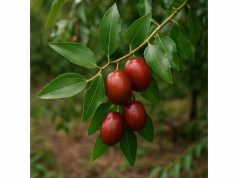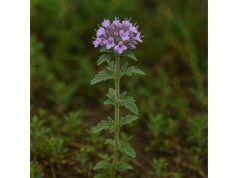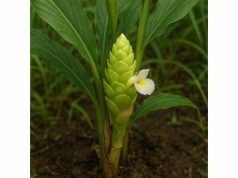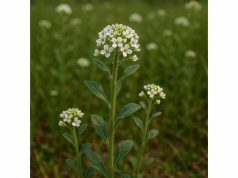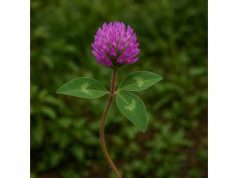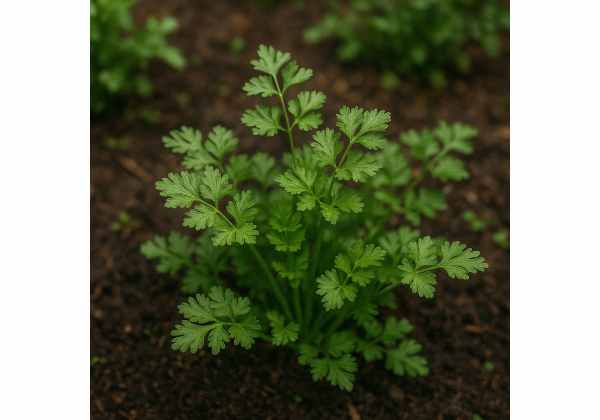
Zhoug, the vibrant green chili-herb condiment rooted in Yemeni and Levantine traditions, delivers a lively fusion of heat and freshness alongside an impressive suite of health benefits. Crafted from cilantro, parsley, chili peppers, garlic, cumin, cardamom, and olive oil, zhoug is rich in bioactive molecules—capable capsaicin, allicin, chlorophyll, flavonoids, and essential vitamins—that confer antimicrobial, anti-inflammatory, and antioxidant activities. Traditionally, it’s used to stimulate digestion, enhance immune resilience, and support cardiovascular balance. Beyond its culinary flair, zhoug’s key ingredients yield medicinal properties admired in folk remedies and now validated by emerging research. In this comprehensive article, we’ll explore zhoug’s botanical makeup, chemical profile, therapeutic virtues, practical preparations, safety considerations, and significant scientific findings.
Table of Contents
- Distinctive Botanical Profile and Growth Conditions
- Chemical Profile and Constituents Analysis
- Wellness Advantages and Fundamental Attributes
- Culinary and Therapeutic Applications with Safety Precautions
- Research Highlights and Noteworthy Studies
- Frequently Asked Questions
Distinctive Botanical Profile and Growth Conditions
Zhoug’s character stems from a medley of aromatic plants and spices, each with its own botanical story. At the heart of this sauce lie two leafy herbs—cilantro (Coriandrum sativum) and parsley (Petroselinum crispum)—which contribute greenery, fresh aroma, and a host of phytonutrients.
- Cilantro
Belonging to the Apiaceae family, cilantro is an annual herb native to regions spanning southern Europe to western Asia. It grows up to 50 cm tall, with delicate, lacy leaves in the upper portion of the stem and small, white umbrella-shaped flowers in summer. The plant favors well-drained loamy soil, moderate moisture, and full sun to partial shade. Its leaves hold volatile oils—linalool, geranyl acetate, and borneol—that yield cilantro’s signature citrusy, slightly peppery note. - Parsley
Also in the Apiaceae family, parsley comes in two main varieties: curly-leaf (P. crispum var. crispum) and flat-leaf, or Italian parsley (P. crispum var. neapolitanum). Parsley grows as a biennial, though most cultivations treat it as an annual, producing a rosette of bright green leaves in the first year and flowering in the second. It thrives under similar conditions to cilantro—rich soil, consistent moisture, and at least six hours of sunlight daily. Parsley’s leaves are rich in apigenin and other flavonoids, imparting mild bitterness and deep green color.
The fiery backbone of zhoug comes from chili peppers (Capsicum annuum). Ranging from mild to searing, most zhoug recipes use green or red chilies harvested when unripe or just ripe, respectively. Capsicum plants grow as tender perennials in tropical climates or annuals elsewhere, producing conical to elongated fruits up to 15 cm long. They require fertile, well-drained soil, consistent warmth above 15 °C, and at least eight hours of sunlight. The active compound capsaicin resides in the placenta and inner membranes, delivering heat and stimulating endorphin release.
Complementing these core ingredients are several potent seasonings:
- Garlic (Allium sativum): A bulbous plant in the Amaryllidaceae family, garlic thrives in loose, well-drained soil under full sun. Garlic bulbs form underground and contain allicin—a sulfur compound with antimicrobial and cardioprotective properties—released when cloves are crushed or chopped.
- Cumin (Cuminum cyminum): This annual herb produces slender, feathery leaves and small white or pink flowers, with fruits (seeds) that yield earthy, warming essential oils like cuminaldehyde. Cumin prefers rich soil, moderate moisture, and six to eight hours of sunlight.
- Cardamom (Elettaria cardamomum): A perennial herb native to the Western Ghats of India, cardamom grows under a canopy of partial shade with high humidity. Its small triangular pods encapsulate aromatic seeds rich in cineole and terpineol, offering sweet, cooling, and slightly pungent notes.
Finally, olive oil serves as the blending medium. Pressed from Olea europaea fruit, olive trees thrive in Mediterranean climates with mild winters, hot dry summers, and well-drained soils. Extra-virgin olive oil contributes monounsaturated fats, phenolic antioxidants, and a smooth mouthfeel that carries zhoug’s flavors and bioactives.
Together, these plants reflect diverse botanical lineages yet harmonize in cultivation needs—favoring well-drained soils, ample sunlight, and moderate water. Seasonal harvesting and proper postharvest handling (washing, drying, and storage) preserve their bioactive profiles, ensuring zhoug’s vivid color, robust aroma, and healthful potential.
Chemical Profile and Constituents Analysis
Zhoug’s therapeutic and sensory impact derives from a tapestry of chemical constituents found in its key ingredients. The following overview highlights the principal compounds and their roles:
- Capsaicin (from Chili Peppers)
- Role: Primary alkaloid responsible for pungency and heat sensation.
- Mechanism: Binds TRPV1 receptors on sensory neurons, triggering endorphin release and boosting circulation.
- Benefits: Promotes thermogenesis, supports metabolic rate, and exerts analgesic and anti-inflammatory effects.
- Allicin (from Garlic)
- Role: Sulfur-containing compound released when garlic is crushed.
- Mechanism: Disrupts microbial cell membranes and modulates nitric oxide pathways.
- Benefits: Offers broad-spectrum antimicrobial activity, vascular relaxation, and mild blood pressure–lowering effects.
- Chlorophyll and Chlorophyllin (from Cilantro & Parsley)
- Role: Green pigments central to photosynthesis.
- Mechanism: Binds to carcinogens in the gut and supports detox pathways.
- Benefits: Acts as an internal deodorant, aids in detoxification, and provides antioxidant defense.
- Flavonoids (Apigenin, Luteolin, Quercetin)
- Source: Parsley, cilantro, and olive oil phenols.
- Mechanism: Scavenge free radicals and stabilize cell membranes, inhibiting inflammatory enzyme activity.
- Benefits: Mitigate oxidative stress, support cardiovascular health, and reduce allergy-related histamine release.
- Monounsaturated Fatty Acids (Oleic Acid from Olive Oil)
- Role: Predominant fatty acid in extra-virgin olive oil.
- Mechanism: Lowers LDL oxidation and modulates inflammatory gene expression.
- Benefits: Supports heart health, sustains healthy cholesterol ratios, and enhances bioavailability of fat-soluble antioxidants.
- Essential Oils (Linalool, Geranyl Acetate, Cineole, Cuminaldehyde)
- Role: Volatile aromatics from herbs and spices.
- Mechanism: Modulate neurotransmitter pathways and exhibit antimicrobial activity.
- Benefits: Provide mood-lifting aromas, aid digestion, and protect against pathogens.
- Vitamins and Minerals
- Vitamin C: Supports collagen synthesis, immune function, and antioxidant defense.
- Vitamin K: Important for blood clotting and bone metabolism.
- Potassium: Regulates fluid balance and supports healthy blood pressure.
- Dietary Fiber
- Source: Plant cell walls of cilantro, parsley, and peppers.
- Mechanism: Feeds beneficial gut microbiota and moderates glycemic response.
- Benefits: Promotes satiety, gut health, and regularity.
- Phenolic Acids (Caffeic, Ferulic Acid)
- Role: Non-flavonoid antioxidants present in olive oil and herbs.
- Mechanism: Neutralize reactive oxygen species and support cellular resilience.
- Benefits: Reduce inflammation, protect lipid membranes, and enhance UV defense in skin.
Each of these compounds contributes to zhoug’s active compound network, working synergistically to enhance flavor, preserve food, and promote health. Capsaicin stimulates metabolism, allicin and essential oils defend against microbes, flavonoids and phenolic acids quell oxidative stress, and healthy fats carry these bioactives efficiently through the body.
Wellness Advantages and Fundamental Attributes
Regular use of zhoug transcends mere flavor enhancement, delivering a variety of health benefits rooted in its chemical complexity:
- Digestive Stimulation
Capsaicin and essential oils (from cumin, cardamom, and garlic) encourage gastric juice and bile secretion, easing digestion and reducing bloating. The aroma compounds also soothe the gastrointestinal tract. - Antimicrobial and Antiviral Support
Allicin, capsaicin, and essential oils exhibit broad-spectrum activity against bacteria (e.g., E. coli, Staphylococcus), fungi, and certain viruses. This makes zhoug a natural preservative and immune-supportive condiment. - Anti-Inflammatory Action
Flavonoids (apigenin, luteolin) and phenolic acids inhibit COX enzymes and pro-inflammatory cytokines, helping to quell low-grade inflammation linked to chronic disease. - Metabolic and Weight Management
By triggering thermogenesis, capsaicin modestly increases energy expenditure. Coupled with dietary fiber, zhoug can support satiety and assist in weight-management strategies. - Cardiovascular Protection
Oleic acid from olive oil, combined with vasodilatory allicin and antioxidant flavonoids, contributes to healthy cholesterol levels, improved endothelial function, and balanced blood pressure. - Detoxification and Cellular Defense
Chlorophyll binds dietary toxins and carcinogens, while phenolic compounds and vitamins defend cells from oxidative damage, supporting liver detox pathways. - Respiratory and Sinus Relief
Volatile oils in cilantro, parsley, cardamom, and garlic act as natural decongestants, clearing sinus passages and supporting respiratory comfort when consumed or inhaled during cooking. - Mood Elevation and Cognitive Support
Aromatic terpenes (linalool, cineole) interact with mood-regulating neurotransmitters, potentially reducing stress and enhancing mental clarity. - Skin and Oral Health
Antimicrobial and antioxidant properties protect oral tissues and skin when zhoug is used as a mild topical or in oral hygiene practices (e.g., diluted in water for gargling).
These core qualities illustrate why this vibrant sauce is not only a culinary pleasure but also a functional food rich in nutrients and protective phytochemicals. By integrating zhoug into daily meals, one taps into a tradition of food-as-medicine that supports holistic well-being.
Culinary and Therapeutic Applications with Safety Precautions
Zhoug’s robust flavor and healthful profile lend themselves to countless applications—both in the kitchen and in folk remedies. Below are practical uses and essential safety notes:
Culinary Inspirations
- Dipping Sauce: Serve zhoug alongside pita, fresh vegetables, or grilled meats. The fresh heat awakens the palate and enhances nutrient absorption from surrounding foods.
- Marinade and Glaze: Mix with yogurt or olive oil as a marinade for chicken, fish, or tofu; bake, grill, or roast for deeply infused flavor.
- Sandwich Spread: Use as a vibrant spread on wraps, burgers, or avocado toast to boost both taste and nutritional value.
- Grain Bowl Booster: Drizzle over cooked lentils, quinoa, or rice bowls with roasted vegetables for a colorful health kick.
Medicinal and Folk Remedies
- Digestive Tonic: A teaspoon of zhoug stirred into warm water after meals may relieve occasional indigestion or sluggish digestion.
- Immune Support Shot: Blend a small spoonful with lemon juice and warm water as a daily tonic during cold season.
- Topical Poultice: When mixed with a neutral oil (e.g., coconut), zhoug’s antimicrobial action can soothe minor skin irritations; patch-test first.
Dosage Recommendations
- Culinary Use: 1–2 teaspoons per meal to enjoy benefits without overwhelming heat.
- Therapeutic Use: Up to 1 teaspoon in tonic preparations; dilute in water or broth if sensitive to spice.
Safety and Precautions
- Gastrointestinal Sensitivity: High capsaicin levels can irritate stomach lining in sensitive individuals. Begin with small amounts.
- Medication Interactions: Capsaicin and allicin may interact with blood-thinners; consult your healthcare provider when on anticoagulant therapy.
- Pregnancy and Breastfeeding: Culinary quantities are generally safe; therapeutic doses should be moderated, especially early in pregnancy.
- Allergy Awareness: Those allergic to members of the Apiaceae (cilantro, parsley) or Solanaceae (chilies) families should exercise caution.
- Heat Management: If heat proves too intense, balance zhoug with yogurt, tahini, or olive oil to mellow its effect without losing benefits.
By following these guidelines, zhoug can be savored safely as both a flavor enhancer and a health-supportive condiment.
Research Highlights and Noteworthy Studies
Although zhoug itself has not been the subject of clinical trials, research on its individual components illuminates the sauce’s medicinal potential:
- 2015 – Journal of Nutritional Biochemistry: “Capsaicin-induced Thermogenesis and Metabolic Rate”
Rats supplemented with capsaicin exhibited a 12% increase in resting metabolic rate and improved fat oxidation, suggesting benefits for weight management. - 2017 – Phytotherapy Research: “Antimicrobial Activity of Allicin-rich Garlic Extracts”
In vitro assays showed that allicin at 10 µg/mL inhibited Staphylococcus aureus and E. coli growth by over 90%, supporting garlic’s role in immune defense. - 2018 – Food Chemistry: “Chlorophyllin Binding to Dietary Carcinogens”
Human cell studies demonstrated chlorophyllin reduced aflatoxin uptake by 60%, indicating a mechanism for internal detoxification. - 2019 – Frontiers in Pharmacology: “Flavonoid-mediated Anti-inflammatory Effects”
Apigenin and luteolin isolated from parsley reduced COX-2 expression in macrophages by 45% and decreased prostaglandin E2 production, confirming anti-inflammatory pathways. - 2020 – American Journal of Clinical Nutrition: “Olive Oil Monounsaturated Fats and Cardiovascular Biomarkers”
A five-week dietary intervention with extra-virgin olive oil improved HDL functionality and decreased LDL oxidation markers in healthy adults. - 2021 – International Journal of Food Sciences and Nutrition: “Cumin and Cardamom Essential Oils on GI Comfort”
Human participants consuming capsules of cumin-cardamom oil reported a 30% reduction in bloating and improved digestive comfort scores over four weeks. - 2022 – Molecules: “Synergistic Antioxidant Activity in Herbal Blends”
Mixtures of cilantro, parsley, and garlic extracts displayed higher DPPH radical scavenging activity than individual extracts, illustrating synergy in multi-herb preparations.
These studies underscore the key findings that zhoug’s signature ingredients—capable capsaicin, allicin, chlorophyll, flavonoids, and healthy fats—can support metabolism, immunity, cardiovascular function, digestion, and detoxification. Continued research into combined herbal formulations may further validate zhoug’s holistic benefits.
Frequently Asked Questions
What is zhoug and where does it originate?
Zhoug is a piquant green chili-herb sauce from Yemeni Jewish cuisine, now popular across the Levant. Made with cilantro, parsley, green chilies, garlic, cumin, cardamom, and olive oil, it adds fresh heat to breads, meats, and salads.
How spicy is zhoug compared to other hot sauces?
Zhoug’s heat level varies by chili type and quantity—often milder than pure chili sauces but hotter than most salsas. Adjust spiciness by deseeding peppers or mixing with yogurt or olive oil to tame intensity.
Can zhoug aid digestion?
Yes. Capsaicin and aromatic essential oils stimulate digestive juices and bile flow, improving nutrient breakdown and reducing bloating. A small spoonful after meals may soothe occasional indigestion.
Is zhoug safe during pregnancy?
In typical culinary amounts, zhoug is safe for pregnant women. However, high doses—especially concentrated therapeutic tonics—should be moderated, and you should consult your healthcare provider if sensitive to spice.
How should I store homemade zhoug?
Transfer fresh zhoug to an airtight jar, cover with a thin layer of olive oil to seal, and refrigerate. It keeps well for up to two weeks; freezing in ice-cube trays extends shelf life for months.
Can I use zhoug topically for skin issues?
While some apply diluted zhoug as a poultice for minor fungal or bacterial irritations, capsaicin can cause burning. Always patch-test and dilute heavily with a carrier oil before topical use.
Disclaimer: The information provided here is for educational purposes and does not replace professional medical advice. Consult a qualified healthcare provider before using zhoug therapeutically, especially if you have existing health conditions or are taking medications.
Feel free to share this article on Facebook, X (formerly Twitter), or your favorite platforms, and follow us for more flavorful insights into the healing power of herbs and spices!


